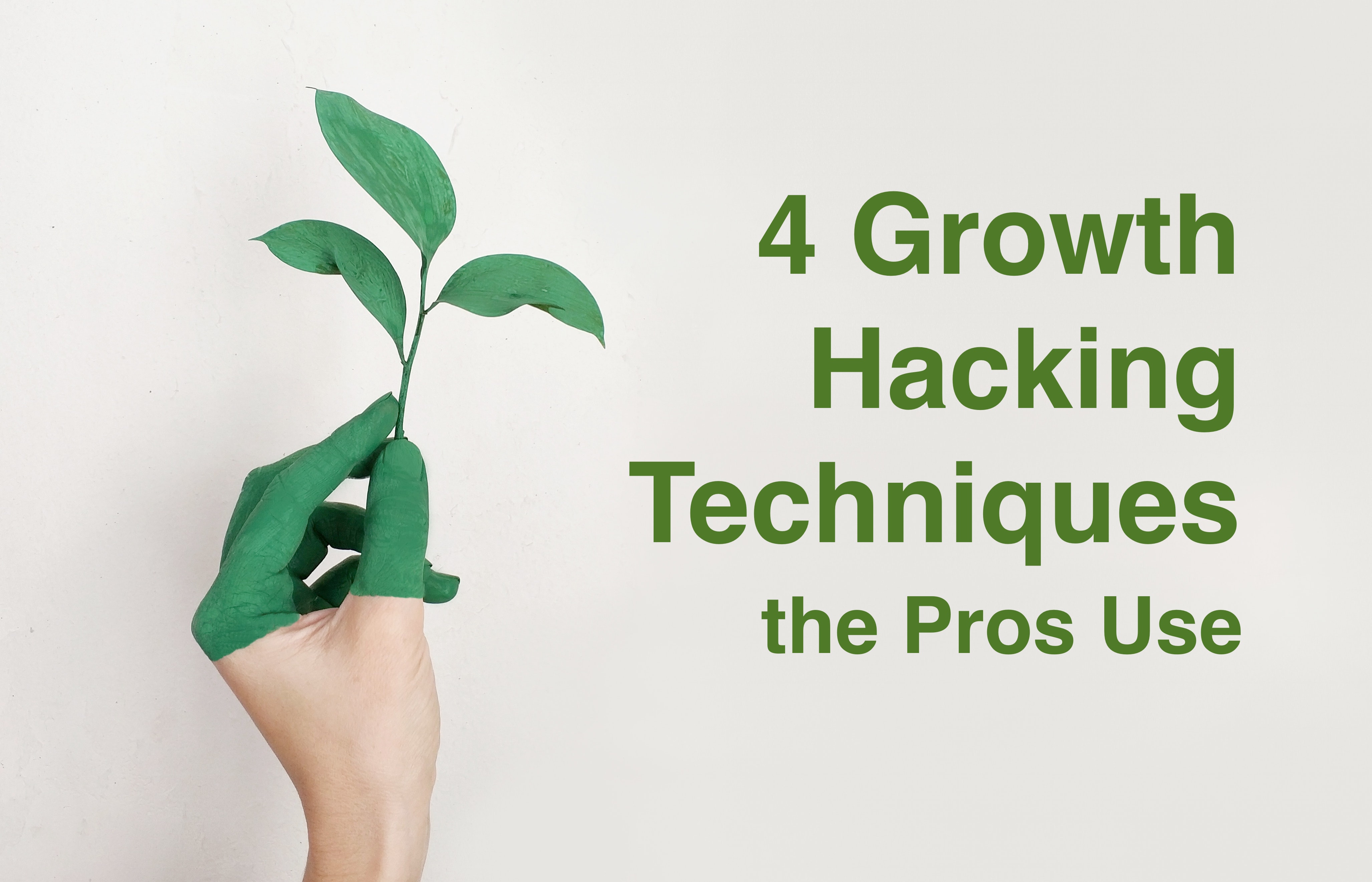
Everyone seems to have varying definitions of growth hacking.
Wikipedia defines it as “a process of rapid experimentation across marketing channels, product development, sales segments, and other areas of the business to identify the most efficient ways to grow a business.”
Aaron Ginn, an early founder of the growth hacking movement, who did growth for Everlane from 2014 to 2016, sees growth hacking as a love for data, creativity, and curiosity.
Some marketers claim that growth hacking is coding + marketing.
Do you have to code to do growth hacking?
No.
According to Sean Ellis, the man who coined the phrase “growth hacking,” a growth hacker is the person whose true north is growth. I like this definition. Maybe because it was Sean who invented the phrase.
I like it. It is the perfect definition of growth hacking.
Growth hackers only care about one thing:
Growth.
How can you apply growth hacking to your business to enable it to grow faster?
There are 4 growth hacking techniques marketers use.
1. Give something away from free

Many companies grow their businesses by giving things away for free.
You may be wondering how they are making money if they are giving away their products or services.
It may sound useless, but some companies realized that they benefit when they give away products and services they paid to create.
Giving out free stuff is a powerful growth hacking technique.
MailChimp lets new businesses use their email marketing service for free.
Procter & Gamble once hosted an enormous giveaway in New York City where they gave out over 40,000 products from their brands.
Consumers love free stuff.
Why?
According to Dan Ariely, who is a Duke University professor and author of Predictably Irrational: The Hidden Forces That Shape Our Decisions:
“Most transactions have an upside and a downside, but when something is FREE! we forget the downside. FREE! gives us such an emotional charge that we perceive what is being offered as immensely more valuable than it really is.”
What valuable thing can you give to potential customers for free?
That thing should be better, different and new.
When you give something valuable away, you gain a competitive advantage.
When you offer part of your product or service for free, it increases the number of people who use it.
The more the people who use it, the more feedback you’ll get.
You can use the feedback you receive from free users to improve the quality of your product.
By using this technique, your company will grow faster.
2. Invest in your current customers

Why should you care about your current customers?
Why do you need them to grow your business? Aren’t they already customers who buy and enjoy your products?
The top marketing goal for most businesses is to find new customers.
Many companies are so focused on gaining new customers that they fail to retain those they already have.
Keeping your existing customers happy is a quicker way to grow your business than finding new ones.
It is 5 times more expensive to acquire new customers than to retain existing ones, according to Forrester.
When you retain existing customers, they’ll continue to buy from you for a very long time. That way, you’ll increase your revenue per customer.
An existing customer could also refer potential clients to your business.
Therefore, invest in your current customers to keep them happy.
How do you do that?
Offer them an experience that is hard to beat by competitors.
Make it super easy for customers to contact you.
While a thank-you email is a nice gesture, sending customers handwritten notes will make them remember your brand for a long time.
See customers as friends. Being friends doesn’t mean becoming complacent. In fact, it’s the opposite.
You should feel more obligated to provide the best advice, products, and services.
Amazon began as a bookstore in 1994. Today, it sells almost everything. One of the keys to Amazon’s success is customer service.
What can you do to make your current customers like your brand more? Do those things.
3. Retarget people who have visited your site

If you’ve been reading about digital marketing for some time now, I’m sure you’ve heard the terms “content marketing” and “PPC” or “pay-per-click advertising.”
If you haven’t, content marketing means creating and distributing valuable and relevant content that attracts prospects to your business.
PPC is an advertising model where you pay each time a potential client clicks on your advertisement. You can run PPC ads on Google, Bing, Facebook, etc.
Some marketers argue that one generates better ROI than the other. Depending on the kind of product or service you sell, and the industry you’re in, PPC can be a better marketing strategy for you than content marketing, and vice versa.
They both have their pros and cons.
Content marketing is a long-term game. It takes time before you start getting worthwhile results from it. Sometimes, it could take up to a year.
PPC is instant. You could start seeing positive returns from the first day, assuming you also know how it works.
However, you stop getting visitors and customers from PPC the moment you run out of money to advertise on Google or Facebook.
Content marketing will continue to send visitors and clients to your business long after you’ve stopped investing in it.
Retargeting is an effective growth hacking technique that helps you combine content marketing with PPC.
How does it work?
A retargeting provider like Facebook drops a cookie on your new visitors’ browsers.
Now, you can create ads that target these visitors on Facebook.
Retargeting allows you to create ads that target visitors based on the pages they’ve visited on your site and when.
For example, you can retarget visitors who have added products to their carts and stopped there. You can create an ad that asks them to complete their purchase.
Offering discounts through your retargeting ads can get people to act quickly.
How is this a growth hacking technique?
Because it allows you to do lots of things. You can target anyone based on their activities on your site.
For example, if you sell multiple products on your site, you can target visitors based on the product they are interested in.
Retargeting offers you a second chance to convert these visitors. People rarely buy the first time they visit a website.
4. Become active and engage on social media

Almost every marketing process is becoming automated.
But there’s one task businesses will never be able to automate:
It is the process of engaging with customers on social media.
Every individual has unique needs and uses their own unique words to express themselves on social media.
Develop relationships with prospects on social media by using terms they use and understand.
If your business is not already on social media, it should be there immediately.
Social media will help you gain new customers and stay in touch with existing ones.
Social media platforms like Facebook, Instagram, LinkedIn, Twitter, etc., connect you with people.
When you are active on social media, prospects recognize you. They become aware of your brand.
Don’t just create profiles on Facebook, Instagram, LinkedIn, etc. You should be active too.
Even if most of your prospects don’t engage with you on social media, knowing that you have a solid presence on social media only increases your company’s credibility.
The growth hacking techniques outlined on this page will help you build your business faster.
These strategies have been tested and proven.
Which growth hacking techniques have you used, and what were your results?
Share them with me below in the comment section.
Thanks.
Discover
The 12 Marketing Secrets of Fast-Growth Companies
Find out what they do to achieve outrageous business success

Get your free copy

 By
By 
Post a Comment
You must be logged in to post a comment.